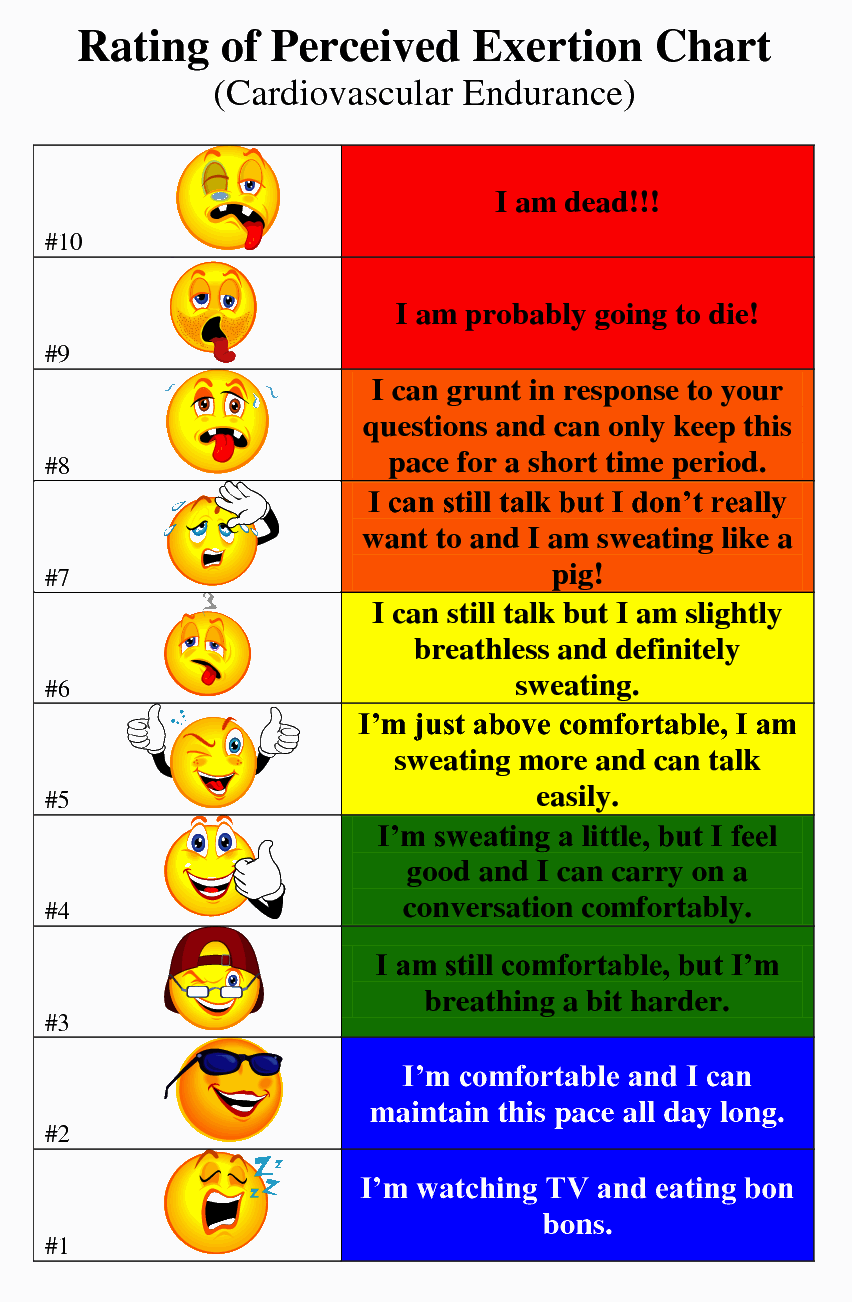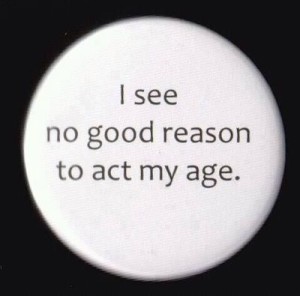So, you’re jogging on the treadmill, but don’t know if you’re exercising at an appropriate intensity or pace? A way of determining whether you should modify your intensity level is to use the Rating of Perceived Exertion Scale.
Using the Rating of Perceived Exertion Scale helps you to determine the efficacy, as well as the safety, of your exercise program. You want to reach a level of intensity that will induce a training effect, while ensuring that you don’t get to a point when you start to experience adverse effects. Heart rate is commonly used, but it can be influenced by many factors, such as certain medications, environmental conditions, and psychological/mood states. The Rating of Perceived Exertion Scale is a reliable alternative to help you self-monitor your exercise intensity on a minute-by-minute basis, allowing you to immediately modify your intensity by speeding up or down your movements.
So, how do you use the scale? The scale ranges from 0 (you are at rest) to 10 (complete exhaustion). When you’re trying to determine what your current level of intensity is, it is important to consider your overall exertion, not just the soreness of a specific body part. Also, since this is a subjective scale, your own appraisal of your exertion is what’s important – don’t compare yourself to other people! As a guide, moderate intensity is considered to be 4-6 on the 0-10 scale and high intensity is considered as 7-9. Discuss your physical activity goals with a healthcare professional at Form and Function to determine at which intensity level you should be training.
The “talk test” is a simpler version of the Rating of Perceived Exertion Scale. If you can sing during your activity, you’re exercising at a low intensity; however, if you can barely get a word out, without having to take a gulp of air, you’re exercising at a vigorous intensity. Therefore, a moderate intensity is when you are exercising, but can still carry on a conversation.
Using this as a starting point, if over time, your rating decreases or you are able to sing while performing the same activity, then you know that your exercise tolerance has improved – great job!

Sonia
Physiotherapy Resident


